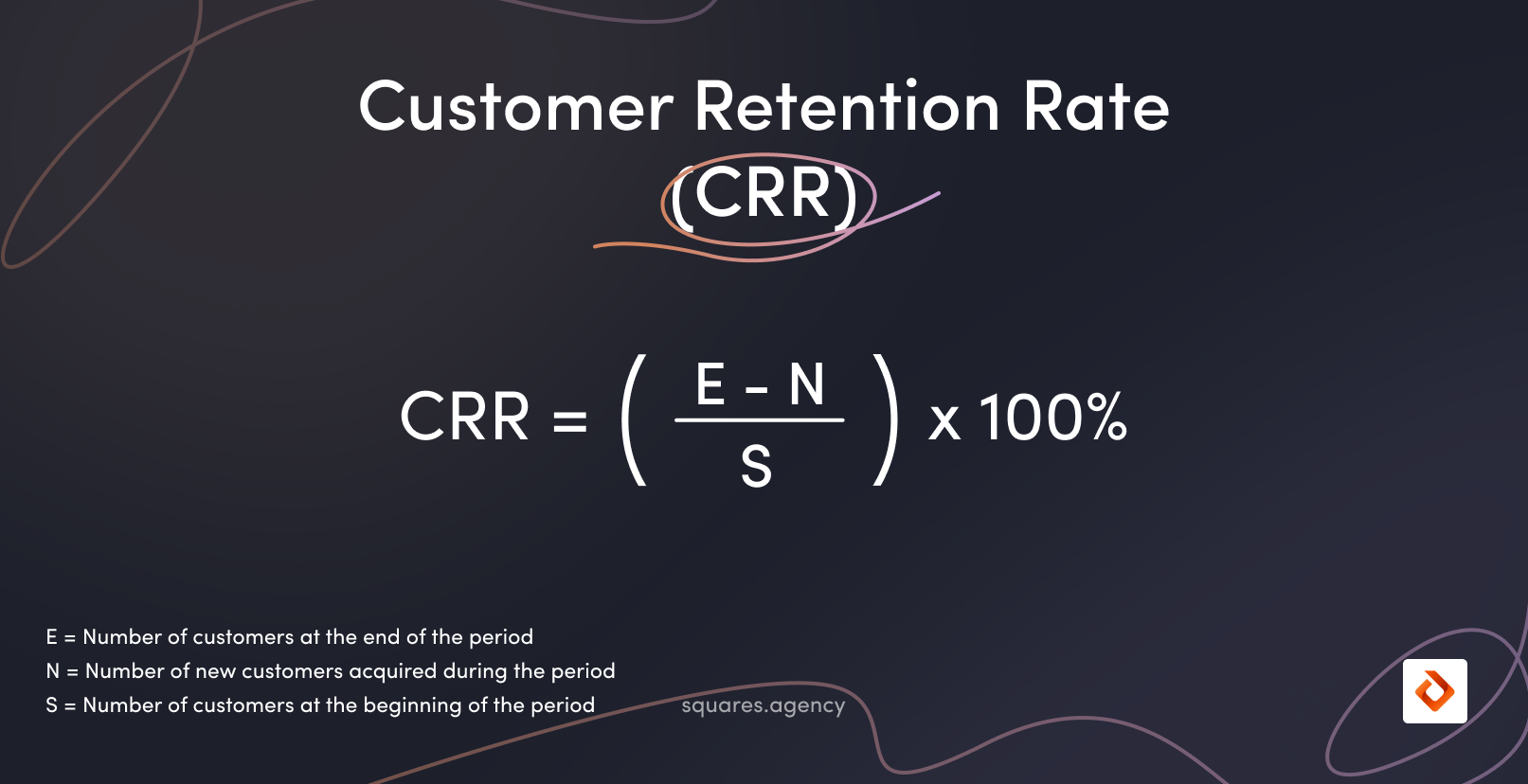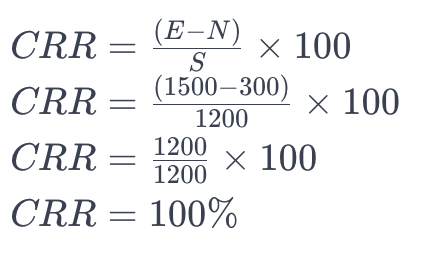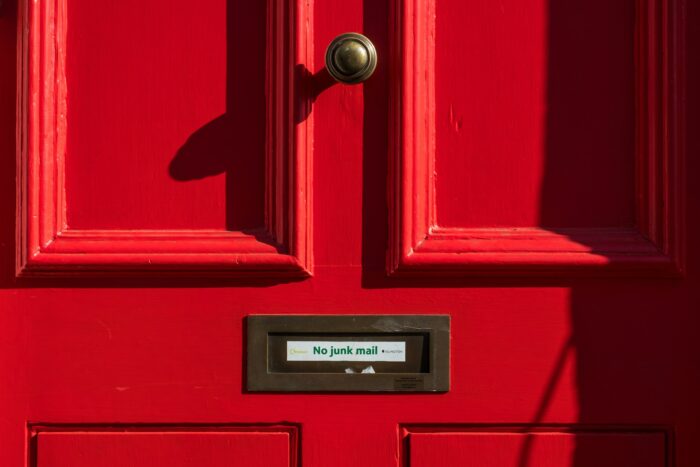Customer Retention Rate (CRR)

In today’s dynamic business world, maintaining customer loyalty is as important as acquiring new ones. The Customer Retention Rate (CRR) emerges as a key metric that allows companies not only to measure but also to increase the loyalty of their customers. In this article, we will explore why CRR is so important and how you can use it to improve your business results.
What is Customer Retention Rate (CRR)?
The Customer Retention Rate (CRR) is a key measure used in business to assess the degree to which a company can retain its customers over a specific period. It is a percentage value that helps companies understand how effectively they maintain their customer base, which is directly related to their ability to generate revenue and achieve long-term growth.
Customer retention is often seen as more cost-effective than acquiring new customers. Keeping existing customers requires fewer resources and efforts, and loyal customers often spend more and recommend the company to others. Additionally, loyal customers can provide valuable feedback that helps companies improve their products and services.
Examples of Using the Customer Retention Rate:
- Subscription Company (e.g., streaming services): A company offering subscription services, such as a streaming platform, can use CRR to evaluate how effectively it retains its subscribers. A high retention rate indicates that users are satisfied with the content offered and continue their subscriptions. The company can analyze which content most attracts and retains users, enabling better alignment of its offerings with customer preferences and expectations.
- Retail Store with a Loyalty Program: A retail store operating a loyalty program can use CRR to measure the effectiveness of that program. Analyzing how many customers regularly use their loyalty cards and make repeat purchases can provide insights into how the loyalty program affects customer behavior. A high retention rate in this case may indicate that the loyalty program is attractive and effectively motivates customers to make repeat purchases.
In both cases, by analyzing the retention rate, companies can better understand the needs of their customers, allowing them to adjust their marketing and operational strategies to increase customer satisfaction and loyalty. This helps build stronger relationships with customers and enhances the chances of long-term success for the company.

How to Calculate Customer Retention Rate (CRR)?
Calculating the CRR is not complicated. You can do this by dividing the number of customers at the end of the period by the number of new users during the period, then dividing that result by the number of customers at the beginning and multiplying by 100. This is a simple yet powerful method that allows you to understand how effectively you are retaining your customer base.
The Customer Retention Rate (CRR) is a useful tool for measuring a company’s ability to retain customers over a specific period. This is particularly important in a business environment where acquiring new customers is typically more expensive than retaining existing ones. The CRR equation looks as follows:
Based on the given example, if you have 1,000 customers at the end of the selected period, had 800 customers at the beginning, and 400 customers churned in the meantime, the calculations are as follows:

This means that 75% of the original customer base stayed with the company until the end of the period.
Let’s assume that Company A has 1,200 customers at the beginning of the quarter. During the quarter, the company gained 300 new customers, and at the end of the quarter, the total number of customers is 1,500. To calculate the CRR for this company, we will use the same formula:
- The number of customers at the end of the period (E) is 1,500.
- The number of new customers acquired during the period (N) is 300.
- The number of customers at the beginning of the period (S) is 1,200.

In this case, the retention rate is 100%, which means that Company A not only retained all of its customers but also gained new ones. This is an ideal scenario because the company not only maintained its original customer base but also expanded it with new users.
Customer Retention Rate (CRR) Calculator
What is a Good Customer Retention Rate (CRR)?
The average customer retention rate (CRR) varies by industry. For SaaS products, the monthly customer churn rate ranges from 3% to 8%, translating to an average retention rate of 92% to 97%. The annual churn in this industry hovers around 32% to 50%, resulting in an average retention rate of 50% to 68%.
It’s important to note that a retention rate of 100% is practically impossible to achieve, and industry average CRRs serve as a good benchmark. Loyal customers, according to research, spend on average 67% more and make purchases 90% more frequently than new customers. A customer retention rate of 89% is achieved by companies providing a solid multi-channel customer experience.
Industry User Retention Rate (CRR)
| Industry | User Retention Rate (CRR) | Difference vs Average Retention Rate |
|---|---|---|
| Media | 84% ↑ | 9% |
| Professional Services | 84% ↑ | 9% |
| Automotive & Transport | 83% ↑ | 8% |
| Insurance | 83% ↑ | 8% |
| IT Services | 81% ↑ | 6% |
| Construction & Engineering | 80% ↑ | 5% |
| Financial Services | 78% ↑ | 3% |
| Telecommunications | 78% ↑ | 3% |
| Healthcare | 77% ↑ | 2% |
| IT & Software | 77% ↑ | 2% |
| Average User Retention Rate | 75% – | – |
| Banking | 75% – | 0% |
| Consumer Services | 67% ↓ | 8% |
| Manufacturing | 67% ↓ | 8% |
| Retail | 63% ↓ | 12% |
| Tourism, Travel, Hospitality | 55% ↓ | 20% |
Source: Exploding Topics
How to Improve User Retention Rate?
Increasing the Customer Retention Rate (CRR) is a process that requires a comprehensive approach, encompassing various aspects of a company’s operations. It’s difficult to definitively state what actions should be taken, as this strongly depends on the individual needs, resources, capabilities, and market conditions of the specific company or product. However, some universal aspects to consider include:
Starting with the Basics: It’s important to focus on fundamental aspects of the business, such as personalizing offers, improving customer service, implementing loyalty programs, maintaining regular communication, and collecting and utilizing customer feedback. These actions aim to enhance customer satisfaction, which is a key factor influencing their loyalty.
Innovation and Continuous Improvement: Being open to innovation and the continuous improvement of products and services is essential. This doesn’t mean investing exorbitant amounts in R&D, but rather recognizing that what is considered a standard solution in one industry may be an innovative game-changer in another. Adapting to the changing needs of the market and customer preferences is crucial for maintaining user interest and engagement.
Implementing UX Audits: To effectively execute the above strategies, it’s important to understand which areas require improvement. One effective method is conducting UX audits, which help identify areas needing enhancement in customer interactions with the product or service, essential for providing a satisfying and engaging customer experience.
Product Workshops: Once you have identified specific areas for improvement or are searching for innovations, product workshops can be helpful. These workshops enable project teams and product managers to collaborate on creating solutions tailored to user needs and expectations. Such workshops serve as a platform for idea exchange, experimentation, and innovation, which are key to the continuous improvement of products and services.


